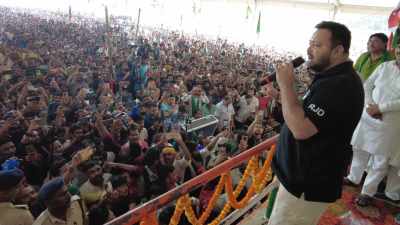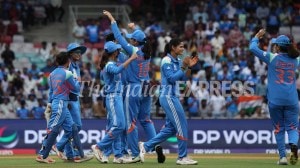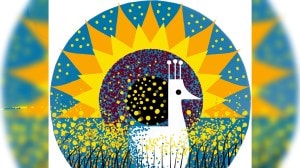Notes from a father to his sons
The choreography was perfect. I suspect Ustad Amjad Ali Khan’s wife, Subbulaxmi, had something to do with it. The stage was austere, ye...

The choreography was perfect. I suspect Ustad Amjad Ali Khan’s wife, Subbulaxmi, had something to do with it. The stage was austere, yet spectacular, the seating arrangement orderly enough to obviate ushering distractions.
The occasion was the release of an extraordinary book, a tribute in pictures and words by the sarod maestro’s two sons to their illustrious father. There has been a rash of book releases in recent days but, by all accounts, this one tops all of them, its crowning moment the recital, a sort of tribute in music, by Amaan and Ayaan Ali Bangash.
What a balm for tired souls such evenings are! As an itinerant journalist, my calendar in recent days has been filled with events and places which are as far removed from a wholesome, aesthetic experience as night is from day — Godhra, thu-thu and dhikkar rallies in Lucknow, lynching of Dalits in Jhajjar!
The evening took me several decades down memory lane. Amjad had just passed out of Modern School when I joined the Statesman. His lessons in sarod had preceded his entry into school by years. In those day, Amjad lived in a modest house in Defence Colony, looking after his ailing father, Ustad Hafiz Ali Khan.
Amjad’s father was the only musician in my recollection who resisted his music being recorded. ‘‘Music is worship for the initiated’’, he said, ‘‘but once my music is recorded it will be played at paan shops.’’ That was undiluted feudal elitism, totally innocent of the dawn of egalitarianism which was to carry classical music from courtly confines to the contemporary concert stage, radio, TV, cassettes and CDs.
Amjad, in many ways, defied a trend, set in the 50s: to be respected in India, you had to be ‘discovered’ in the West. After all, even Satyajit Ray first came into the limelight after Pather Panchali attracted notice in London. In the field of music, Ravi Shankar, the great sitarist, was more nimble footed than others for having made a mark abroad.
He very proudly recalls he had learnt the ways of the world (‘even donning three piece suits’) because he had the advantage of travelling around the world as part of his elder brother, Uday Shankar’s, dance troupe.
Also, to Ravi Shankar’s great advantage was his friendship with Dr Narayana Menon who was not only a competent veena player but exceptionally cosmopolitan in his knowledge of western music as well. In those days Lord Harewood was the director of the Edinburgh music festival, possibly the world’s most prestigious musical congregation.
Dr Menon’s friendship with Lord Harewood provided the opening. Ravi Shankar and his even more distinguished brother-in-law, Ustad Ali Akbar Khan, the sarod maestro, mesmerised audiences at Edinburgh. Indian classical music had burst upon the western stage on an unprecedented scale.
The base for an appreciation of Indian music in the West among the connoisseur could well have been provided by Alain Danielieu’s path breaking book on Indian music. The circle grew. Yehudi Menuhin became the central figure in this east-meets-west jamboree. This cultural cross fertilisation began being debated in musical circles.
Young Amjad Ali Khan had the advantage of observing this intense debate from the sidelines.
The purists thought Ravi Shankar was compromising an ancient system of music for the sake of publicity. A powerful school of thought of which Narayana Menon was a representative figure, saw music as a dynamic, evolving discipline which must keep pace with new trends. Ravi Shankar’s partisans would argue that he is the greater musicologist even though his control on the instrument may not match Ustad Vilayat Khan’s. But it was recognised that the worldwide publicity Ravi Shankar had gained unfairly obscured Vilayat Khan. Surely Ravi Shankar could not be blamed, but he was.
Ravi Shankar over reached himself when, in search of a universal audience, he agreed to play at Woodstock before an audience of hippies drawn from the Haight Ashbury culture. Allah Rakkha, his tabla accompanyist, never forgot the scene. ‘‘Members of the audience were making love while we played’’! Ravi Shankar blushes if you remind him of the episode.
From all of this Amjad learnt the cardinal lesson which he has passed onto his sons. It echoes Gandhiji: ‘‘Keep the windows open to all influences, but do not be swept off your feet.’’ Result: Amjad is today the most popular symbol of Indian music anywhere in the world.
Write to saeednaqvi@expressindia.com






- 01
- 02
- 03
- 04
- 05

























